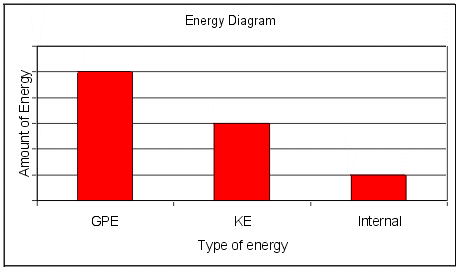

| Name | Description | Symbol | Amount |
|---|---|---|---|
| Linear Kinetic energy | Energy something has because it is moving. | KE | 0.5mv2 |
| Gravitational potential energy | Potential energy due to gravitational force | GPE or PEg | mgh |
| Spring potential energy | Potential energy due to compressed or stretched spring. | SPE or PEs | 0.5kx2 |
| Internal energy | Energy dissipated due to friction, deformation | IE | Fdcos(theta) |
| Muscle, chemical, electrical, etc. | Energy brought into system from muscles, fuel in an engine, electricity, etc. | Fdcos(theta) | |
| Rotational kinetic energy | Energy something has because it is rotating | KErot or RKE | 0.5Iw2 |
| Other forms of energy not
normally encountered in Physics 201:
Electrostatic, Magnetic, light, nuclear, thermal, chemical, etc. |
|||